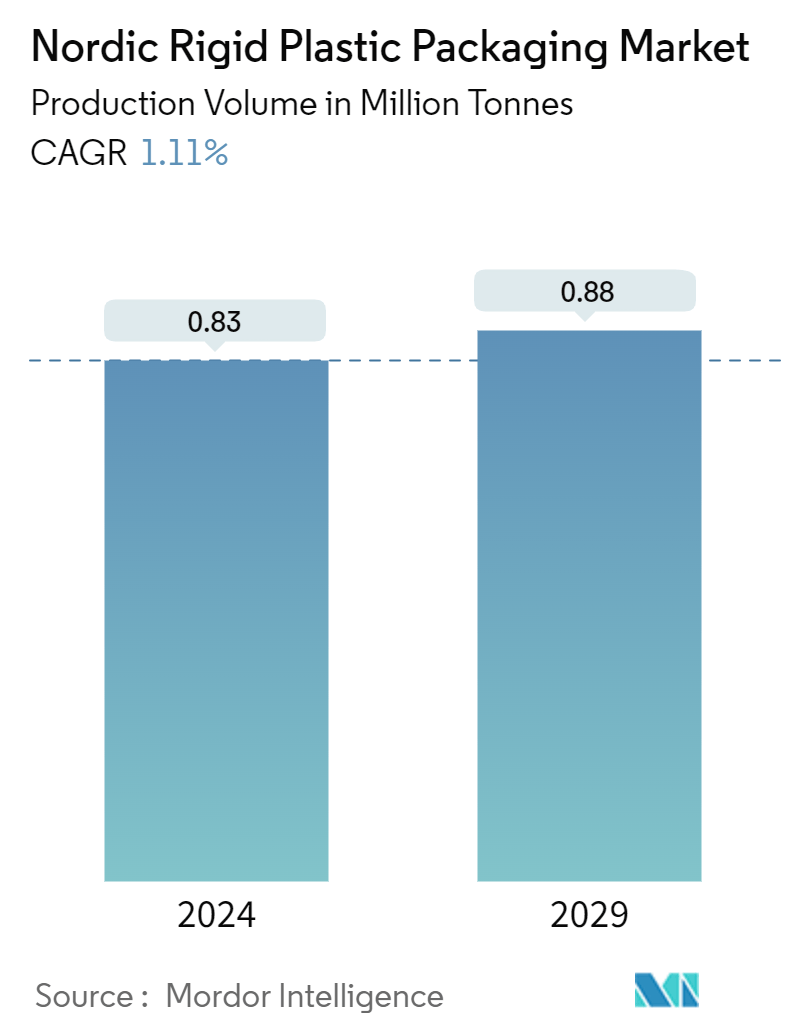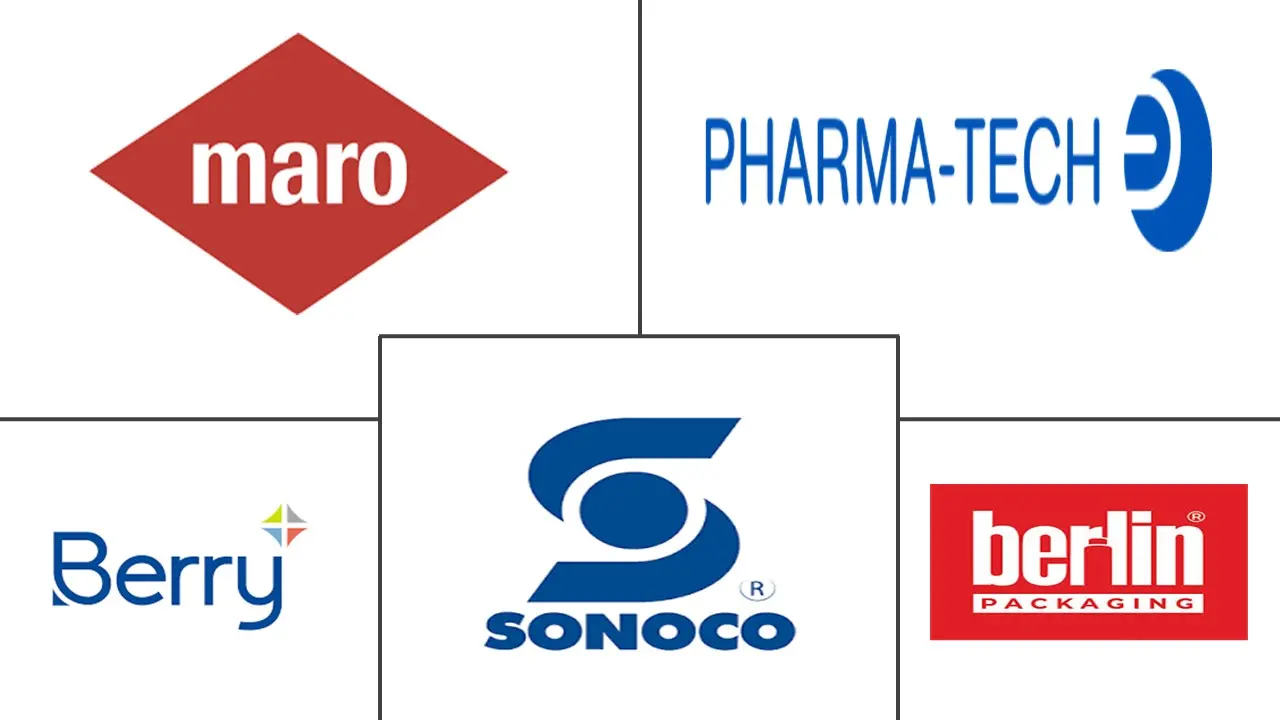Market Size of Nordic Rigid Plastic Packaging Industry

| Study Period | 2024 - 2029 |
| Base Year For Estimation | 2023 |
| Forecast Data Period | 2024 - 2029 |
| Historical Data Period | |
| CAGR (2024 - 2029) | 1.11 % |
| Market Concentration | Low |
Major Players
*Disclaimer: Major Players sorted in no particular order |
Need a report that reflects how COVID-19 has impacted this market and its growth?
Nordic Rigid Plastic Packaging Market Analysis
The Nordic Rigid Plastic Packaging Market size in terms of production volume is expected to grow from 0.83 Million tonnes in 2024 to 0.88 Million tonnes by 2029, at a CAGR of 1.11% during the forecast period (2024-2029).
The Nordic region comprises countries such as Norway, Sweden, Denmark, Finland, and others. The dynamics of the packaging market in the Nordic region are influenced by several unique factors, setting them apart from trends observed in other areas.
• The Nordic region boasts a robust food and beverage industry, relying on plastic packaging to safeguard products during transportation and storage. Consumers in the Nordic region prioritize convenience in packaging, often viewing plastic as a convenient and affordable choice.
• Several unique factors drive the rigid packaging market in the Nordic region, setting it apart from other areas. Here are the primary influences renowned for prioritizing health and wellness. Nordic consumers increasingly seek packaged foods that are high-quality, natural, and free from excessive sugars, salt, and artificial additives.
• Sweden's food processing industry is vital for suppliers outside the EU. Local producers and domestic firms provide raw materials and food ingredients to manufacturers and the food service sector. Arla Foods, Scandi Standard, and HKScan Sweden are prominent players in Sweden's food landscape. With major food processing players in the country, rigid plastic packaging companies might gain opportunities in the food industry.
• According to the Nordic Council of Shopping Centers, traditionally, high distribution costs and the perception of the Nordic markets as small and disparate have posed significant barriers to entry. Prominent brands are increasingly establishing a foothold, especially in major urban centers. Most international retailers opt for entry via franchises, department store concessions, or partnerships. This approach mitigates risks tied to portfolio expansion, and leverages established franchisee distribution networks, thereby minimizing capital expenditure.
• The region also faces challenges due to plastic pollution, and various organizations and governments are focusing on eliminating plastic waste through initiatives. In 2017, the United Nations Environment Assembly set a long-term goal to eradicate all plastic litter discharge into the oceans. However, reports presented to the UN have highlighted significant areas for improvement in the current international legal and policy frameworks, indicating their inadequacy in addressing this issue. In light of this, the Nordic Ministers concur that a fresh global agreement is a potent solution to halt the worldwide leakage of plastics into the environment.

